Oxbow Books is a leading publisher in the fields of archaeology, ancient history and medieval studies, with an international reputation for quality and affordability. Oxbow's archaeology publishing covers all periods from earliest prehistory through classical archaeology, the ancient Near East, Egyptology, the Middle Ages and post-medieval archaeology. They publish a wide variety of books including scholarly monographs, edited collections of papers, and excavation and research reports in related fields such as archaeological practice and theory, archaeozoology, and environmental, landscape and maritime archaeology.
Founded in Oxford in 1983 by academic and museum archaeologist, David Brown, Oxbow Books has evolved and expanded significantly over the years. Now celebrating their 40th anniversary, Oxbow remains dedicated to the quality of their publishing for readers, and the contribution their books bring to the scholarly and professional communities more broadly.
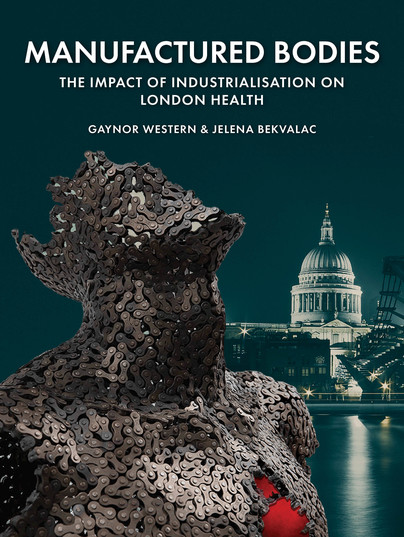
Format: Paperback
Pages: 272
ISBN: 9781789253221
Pub Date: 31 Dec 2019
Illustrations: b/w and colour
Description:
Industrialisation is a notoriously complex issue in terms of the hazards and benefits it has brought to human beings in our endeavours to improve our lives. This is never more evident than in the field of health and medicine, where there are many questions about the causes and treatments of diseases we commonly encounter today, such as cancer, diabetes and degenerative age-related conditions. Are there genetic predispositions to these conditions?
Are they a mirror of our modern lives driven by our fast-paced lifestyles or have they always existed but gone undetected? The archive of human skeletal remains at the Museum of London provides a large bank of evidence that has been explored here, along with other skeletal collections from around England, to investigate how far some of these diseases go back in time and what we can tell about the influence of living environments past and present on human health. The Industrial Period was a key period in human history where substantial change occurred to the population’s lifestyles, in terms of occupations, housing and diet as well as leisurely past-times, all of which would have impacted on their health. London had become the most densely populated metropolis in the world, the beating heart of trade and consumerism, an unambiguous example of the urban experience in the Industrial age. Using up-to-date medical imaging technologies in addition to osteoarchaeological examination of human skeletal remains, we have been able to establish the presence of modern day diseases in individuals living in the past, both before and during Industrialisation, to compare to rates in UK populations today. By re-examining the skeletal evidence, we have traced how the perils of unregulated rural and urban lives, changing food consumption, transport, technologies as well as improving medical treatment and life expectancy, have all altered health patterns over time.
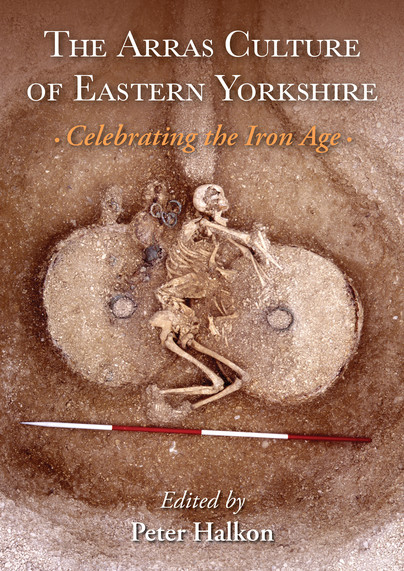
Format: Paperback
Pages: 216
ISBN: 9781789252583
Pub Date: 31 Dec 2019
Illustrations: b/w and colour
Description:
In 1817 a group of East Yorkshire gentry opened barrows in a large Iron Age cemetery on the Yorkshire Wolds at Arras, near Market Weighton, including a remarkable burial accompanied by a chariot with two horses, which became known as the King’s Barrow. This was the third season of excavation undertaken there, producing spectacular finds including a further chariot burial and the so-called Queen’s barrow, which contained a gold ring, many glass beads and other items. These and later discoveries would lead to the naming of the Arras Culture, and the suggestion of connections with the near European continent.
Since then further remarkable finds have been made in the East Yorkshire region, including 23 chariot burials, most recently at Pocklington in 2017 and 2018, where both graves contained horses, and were featured on BBC 4’s Digging for Britain series. This volume bring together papers presented by leading experts at the Royal Archaeological Institute Annual Conference, held at the Yorkshire Museum, York, in November 2017, to celebrate the bicentenary of the Arras discoveries. The remarkable Iron Age archaeology of eastern Yorkshire is set into wider context by views from Scotland, the south of England and Iron Age Western Europe. The book covers a wide variety of topics including migration, settlement and landscape, burials, experimental chariot building, finds of various kinds and reports on the major sites such as Wetwang/Garton Slack and Pocklington.
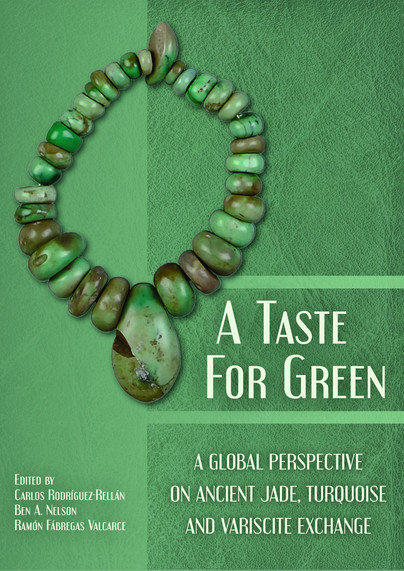
Format: Hardback
Pages: 192
ISBN: 9781789252743
Pub Date: 31 Dec 2019
Illustrations: b/w and colour
Description:
Often along vast expanses, ancient societies traded certain commodities that were considered valuable either for functional or symbolic reasons – or, rather, a mixture of both factors. A Taste for Green addresses latest research into the acquisition of jade, turquoise or variscite, all of which share a characteristic greenish colour and an engaging appearance once they are polished in the shape of axes or assorted adornments. Papers explore how, in addition to constituting economic transactions, the transfess of these materials were also statements of social liaisons, personal capacities, and relation to places or to unseen forces.
The volume centres on two study areas, Western Europe and México/Southwest US, which are far apart not just in geographical terms but also with regard to their chronology and socioeconomic features. While some North and Mesoamerican groups range from relatively complex farming societies up to state-like organisations during the 1st and 2nd millennia AD, the European counterparts are comparatively simpler polities spanning the 5th–3rd millennia BC. By contrasting the archaeological evidence from diverse areas we may gain insights into the role that production/movement of these green stones played in their respective political and ritual economies. Also, we think it useful to compare the scientific approaches applied to this question in different parts of the globe, specially Asia.
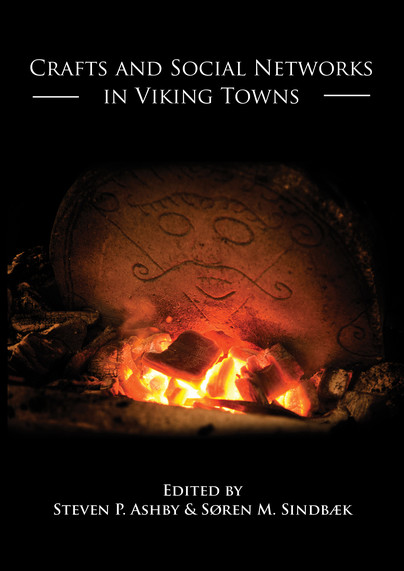
Format: Paperback
Pages: 288
ISBN: 9781789251609
Pub Date: 30 Nov 2019
Illustrations: b/w and colour
Description:
Crafts and Social Networks in Viking Towns explores the interface between craft, communication networks, and urbanisation in Viking-Age northern Europe. Viking-period towns were the hubs of cross-cultural communication of their age, and innovations in specialised crafts provide archaeologists with some of the best evidence for studying this communication. The integrated results presented in these papers have been made possible through the sustained collaboration of a group of experts with complementary insights into individual crafts.
Results emerge from recent scholarly advances in the study of artefacts and production: first, the application of new analytical techniques (e.g. metallographic, isotopic, and biomolecular techniques) and second, the shift in interpretative focus from a concern with object function to considerations of processes of production, and of the social agency of technology. Furthermore, the introduction of social network theory and actor-network theory has redirected attention toward the process of communication, and highlighted the significance of material culture in the learning and transmission of cultural knowledge, including technology. The volume brings together leading UK and Scandinavian archaeological specialists to explore crafted products and workshop-assemblages from Viking towns, in order to clarify how such long-range communication worked in pre-modern northern Europe. Contributors assess the implications for our understanding of early towns and the long-term societal change catalysed by them, including the initial steps towards commercial economies. Results are analysed in relation to social network theory, social and economic history, and models of communication, setting an agenda for further research. The volume provides a landmark statement on our knowledge of Viking-Age craft and communication.
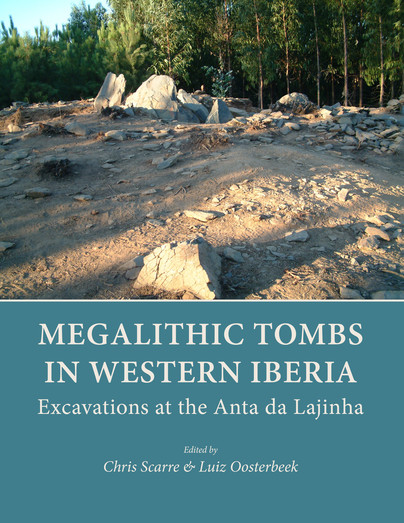
Format: Hardback
Pages: 256
ISBN: 9781785709807
Pub Date: 30 Nov 2019
Illustrations: b/w
Description:
Western Iberia has one of the richest inventories of Neolithic chambered tombs in Atlantic Europe, with particular concentrations in Galicia, northern Portugal and the Alentejo. Less well known is the major concentration of tombs along the Tagus valley, straddling the Portuguese-Spanish frontier. Within this cluster is the Anta da Lajinha, a small megalithic tomb in the hill-country north of the River Tagus.
Badly damaged by forest fire and stone removal, it was the subject of joint British-Portuguese excavations in 2006-2008, accompanied by environmental investigations and OSL dating. This volume takes the recent excavations at Lajinha and the adjacent site of Cabeço dos Pendentes as the starting point for a broader consideration of the megalithic tombs of western Iberia. Key themes addressed are relevant to megalithic tombs more generally, including landscape, chronology, settlement and interregional relationships. Over what period of time were these tombs built and used? Do they form a horizon of intensive monument construction, or were the tombs the product of a persistent, long-lived tradition? How do they relate to the famous rock art of the Tagus valley, and to the cave burials and open-air settlements of the region, in terms of chronology and landscape? A final section considers the Iberian tombs within the broader family of west European megalithic monuments, focusing on chronologies, parallels and patterns of contact. Did the Iberian tombs emerge through connections with older established megalithic traditions in other regions such as Brittany, or whether they are the outcome of more general processes operating among Atlantic Neolithic societies?
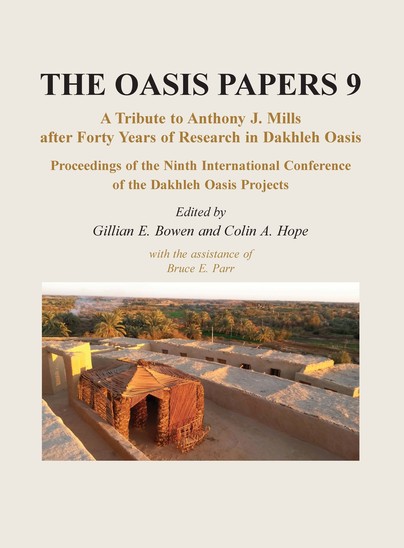
Format: Hardback
Pages: 496
ISBN: 9781789253764
Pub Date: 30 Nov 2019
Series: Dakhleh Oasis Papers
Illustrations: b/w and colour
Description:
This new volume in the Oasis Papers series marks the 40th anniversary of archaeological fieldwork in the Dakhleh Oasis in Egypt’s Western Desert under the leadership of Anthony J. Mills and presents a synthesis of the current state of our knowledge of the oasis and its interconnections with surrounding regions, especially the Nile Valley. The papers are by distinguished authorities in the field and postgraduate students who specialise in different aspects of Dakhleh and presents an almost complete survey of the archaeology of Dakhleh including much unpublished, original material.
It will be one of the few to document a specific part of modern Egypt in such detail and thus should have a broad and lasting appeal. The content of some of the papers is unlikely to be published in any other form elsewhere. Dakhleh is possibly the most intensively examined wider geographic region within Egypt.
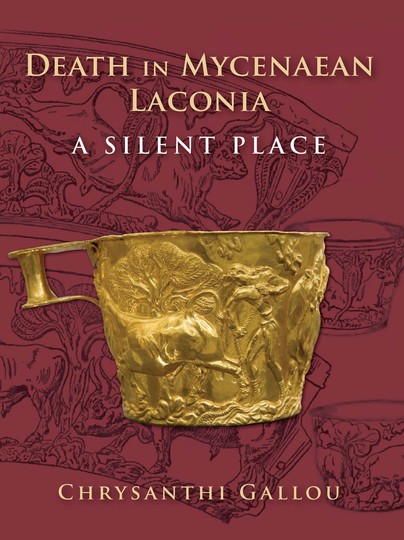
Format: Hardback
Pages: 296
ISBN: 9781789252422
Pub Date: 15 Nov 2019
Illustrations: approx. 550 drawings, images and maps,
Description:
A Silent Place: Death in Mycenaean Lakonia is the first book-length systematic study of the Late Bronze Age (LBA) burial tradition in south-eastern Peloponnese, Greece, and the first to comprehensively present and discuss all Mycenaean tombs and funerary contexts excavated and/or simply reported in the region from the 19th century to present day. The book will discuss and reconstruct the emergence and development of the Mycenaean mortuary tradition in Lakonia by examining the landscape of death, the burial architecture, the funerary and post-funerary customs and rituals, and offering patterns over a longue durée. The author proposes patterns of continuity from the Middle Bronze Age (even the Early Bronze Age in terms of burial architecture) to the LBA and, equally important, from the Late Bronze Age to the Early Iron Age,and reconstructs diachronic processes of invention of tradition and identity in Mycenaean communities, on the basis of tomb types and their material culture.
The text highlights the social, political and economic history of Late Bronze Age Lakonia from the evolution of the Mycenaean civilisation and the establishment of palatial administration in the Spartan vale, to the demise of Mycenaean culture and the turbulent post–collapse centuries, as reflected by the burial offerings. The book also brings to publication the chamber tombs at Epidavros Limera that remained largely unpublished since their excavation in the 1930s and 1950s. Epidavros Limera was one of the most important prehistoric coastal sites in prehistoric southern Greece (early 3rd–late 4th millennium BC), and one of the main harbour towns of the Mycenaean administrative centres of central Lakonia. It is one of very few Mycenaean sites that flourished uninterruptedly from the emergence of the Mycenaean civilisation until after the collapse of the palatial administration and into the transition to the Early Iron Age. The present study of the funerary architecture and of the pottery from the tombs suggests that the site was responsible for the introduction of the chamber tomb type on the Greek mainland in the latest phase of the Middle Bronze Age (definitely no later than the transitional Middle Bronze Age/Late Bronze Age period), and not in the early phase of the Late Bronze Age (Late Helladic I) as previously assumed.
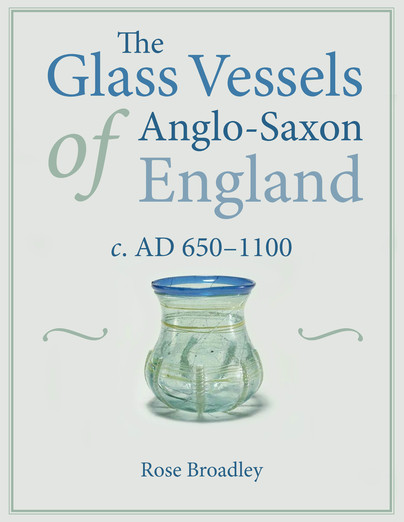
Format: Paperback
Pages: 192
ISBN: 9781789253726
Pub Date: 15 Nov 2019
Illustrations: b/w and colour
Description:
This volume combines a comprehensive exploration of all vessel glass from middle and late Anglo-Saxon England and a review of the early glass with detailed interpretation of its meaning and place in Anglo-Saxon society. Analysis of a comprehensive dataset of all known Anglo-Saxon vessel glass of middle Anglo-Saxon date as a group has enabled the first quantification of form, colour, and decoration, and provided the structure for a new typological, chronological and geographical framework. The quantification and comparison of the vessel glass fragments and their attributes, and the mapping of the national distribution of these characteristics (forms, colours and decoration types), both represent significant developments and create rich opportunities for the future.
The geographical scope is dictated by the glass fragments, which are from settlements located along the coast from Northumbria to Kent and along the south coast to Southampton. Seven case studies of intra-site glass distribution reveal that the anticipated pattern of peripheral disposal alongside dining waste is widespread, although exceptions exist at the monastic sites at Lyminge, Kent, and Jarrow, Tyne and Wear. Overall, the research themes addressed are the glass corpus and its typology; glass vessels in Anglo-Saxon society; and glass vessels as an economic indicator of trade and exchange. Analysis reveals new understandings of both the glass itself and the role of glass vessels in the social and economic mechanisms of early medieval England. There is currently no comprehensive work examining early medieval vessel glass, particularly the post sixth-century fragmentary material from settlements, and my monograph will fill that gap. The space is particularly noticeable when considering books on archaeological glass from England: the early medieval period is the only one with no reference volume; no recent, through and accessible source of information. The British Museum published a monograph entitled ‘Catalogue of Anglo-Saxon Glass in the British Museum’ in 2008, but as the title suggests it is a catalogue at heart, and of a collection of fifth and sixth century grave goods in a single museum. Chronologically, a volume on the subject would fill the space between various books on Roman glass from Britain and ‘Medieval glass vessels found in England c. AD 1200-1500’ by Rachel Tyson. This book on early medieval vessel glass and the contexts from which it came will also make a significant contribution to early medieval settlement studies and the archaeology of trade in this period: both are growth areas of scholarship and interest and vessel glass provides a new tool to address key debates in the field.
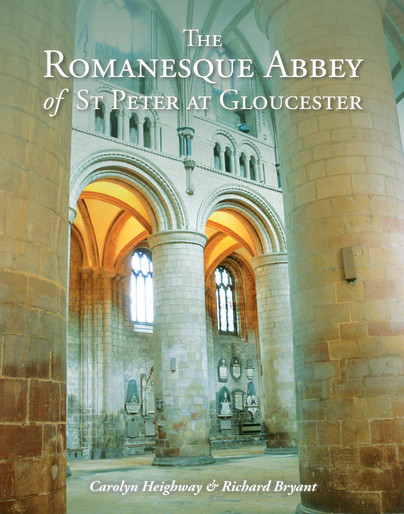
Format: Paperback
Pages: 128
ISBN: 9781789254143
Pub Date: 15 Nov 2019
Illustrations: Colour illustratons
Description:
This book was inspired by the records made by Carolyn Heighway during the thirty years when she was archaeological consultant at Gloucester Cathedral. The survival of so much of the abbey of 1089 is remarkable, and often not appreciated by the casual visitor since it is ingeniously overlaid by Gothic alterations. Since 2000, surveys have been produced which enable accurate plans and elevations to be made which clarify the late 11th and early 12th century appearance of the building; deductions have also been made from archaeological observations.
Since there are almost no documents for the abbey before the 15th century which relate to construction matters, the building itself is primary evidence, and archaeology is an important element. The book is lavishly illustrated with photographs, plans and measured drawings including accurate reconstructions; comparative scale plans of Worcester and Tewkesbury are also included. The late 11th-12th century church is described in detail, along with the surviving claustral buildings. There is a chapter on polychromy and on the surviving 11th-12th century sculpture, and a full bibliography. The whole is set in context by Malcolm Thurlby, who comments on the wider sources and associations.
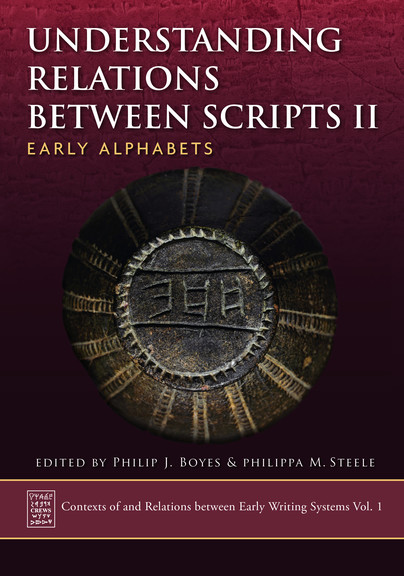
Format: Hardback
Pages: 240
ISBN: 9781789250923
Pub Date: 31 Oct 2019
Series: Contexts of and Relations Between Early Writing Systems
Description:
Contexts of and Relations between Early Writing Systems (CREWS) is a project funded by the European Research Council under the European Union’s Horizon 2020 research and innovation programme (grant agreement No. 677758), and based in the Faculty of Classics, University of Cambridge.Understanding Relations Between Scripts II: Early Alphabets is the first volume in this series, bringing together ten experts on ancient writing, languages and archaeology to present a set of diverse studies on the early development of alphabetic writing systems and their spread across the Levant and Mediterranean during the second and first millennia BC.
By taking an interdisciplinary perspective, it sheds new light on alphabetic writing not just as a tool for recording language but also as an element of culture.
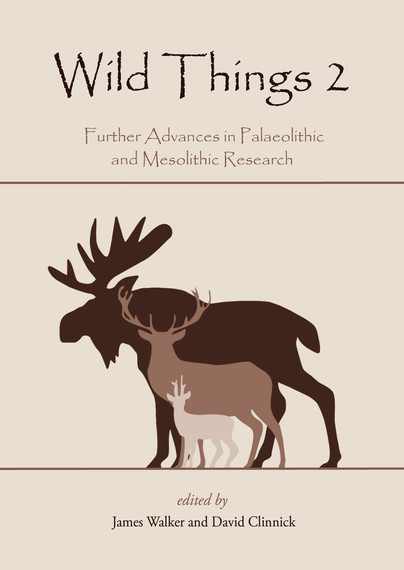
Format: Paperback
Pages: 208
ISBN: 9781785709463
Pub Date: 31 Oct 2019
Description:
Building on the first Wild Things volume (Oxbow Books 2014) which aimed to showcase the research putting archaeologists researching the Palaeolithic and Mesolithic at the cutting edge of understanding humanity’s past, this collection of contributions presents recent research from an international group of both early career and established scientists.Covering aspects of both Palaeolithic and Mesolithic research in order to encourage dialogue between practitioners of archaeology of both periods, contributions are also geographically diverse, touching on British, European, North American and Asian archaeology. Topics covered include transitional periods, deer and people, stone tool technologies, pottery, land-use, antler frontlets, and the development of prehistoric archaeology an 'age of wonder'.
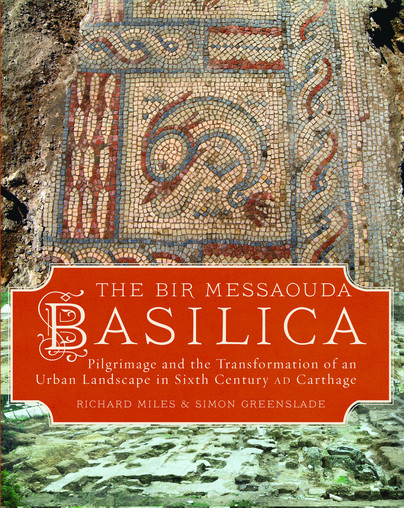
Format: Hardback
Pages: 440
ISBN: 9781785706806
Pub Date: 31 Oct 2019
Description:
This volume charts the radical transformation of an inner city neighbourhood in late antique Carthage which was excavated over a five-year period by a team from the University of Cambridge. Bordering the main thoroughfare leading from the Brysa Hill to the ports, the neighbourhood remained primarily a residential one from the second century until 530s AD when a substantial basilica was constructed over the eastern half of the insula. Further extensive modifications were made to the basilica half-a-century later when the structures on the western half of the insula were demolished and the basilica greatly enlarged with the addition of a new east-west aisles, a large monumental baptistery and a crypt.
By carefully reconstructing the complex architectural plan of this innovative building, this study shows how the re-modelled Bir Messaouda basilica was transformed into a major pilgrimage centre overturning established tradition that located such complexes outside the city walls. The Bir Messaouda basilica provides important insights into the transition between Vandal and Byzantine control of the city, the development of a new Christian inter-mural urban landscape in the sixth century AD, and the significance of the pilgrimage in reinforcing ecclesiastical authority in post-Justinianic North Africa.
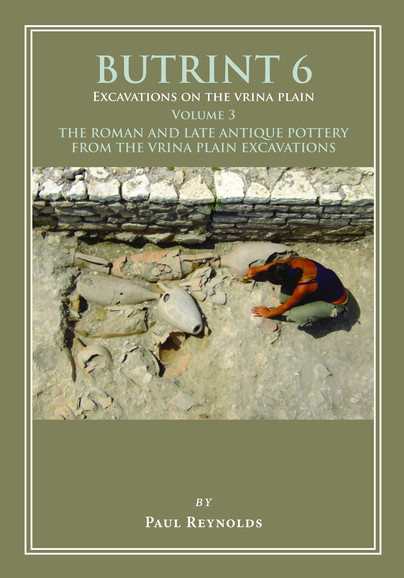
Format: Hardback
Pages: 336
ISBN: 9781789252217
Pub Date: 31 Oct 2019
Series: Butrint Archaeological Monographs
Illustrations: b/w and colour
Description:
Butrint 6 describes the excavations carried out on the Vrina Plain by the Butrint Foundation from 2002–2007. Lying just to the south of the ancient port city of Butrint, these excavations have revealed a 1,300 year long story of a changing community that began in the 1st century AD, one which not only played its part in shaping the city of Butrint but also in how the city interacted and at times reacted to the changing political, economic and cultural situations occurring across the Mediterranean World over this period. Volume III discusses the Roman and Late Antique pottery from the Vrina Plain excavations.
This detailed study of the ceramics follows the archaeological sequence recovered from the excavations in chronological order and provides a comprehensive and in depth review of the pottery, context by context, offering an important insight into the supply, as well as typology, of local and imported pottery available to the inhabitants of the Vrina Plain during this period. This is followed by a discussion on how the pottery trends found on the Vrina Plain relate to that of other sites in Butrint, both within the town (Triconch Palace; the Forum) and outside (Vrina Plain training school villa excavations; the villa of Diaporit). The volume also presents an overview of some of the principal typological developments found across Butrint so as to allow the reader to place the Vrina finds in context, including a discussion of a number of key contexts from the Forum, as well as the findings from thin-section petrology of some of the ceramics.
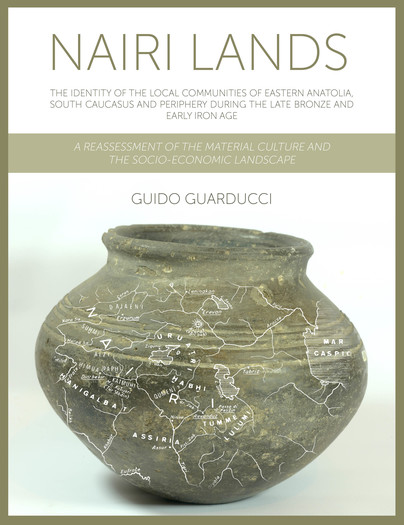
Format: Hardback
Pages: 272
ISBN: 9781789252781
Pub Date: 31 Oct 2019
Illustrations: b/w and colour
Description:
This study analyses the social and symbolic value of the material culture, in particular the pottery production and the architecture, and the social structure of the local communities of a broad area encompassing Eastern Anatolia, the South Caucasus and North-western Iran during the last phase of the Late Bronze Age and the Early Iron Age. This broad area is known from the Assyrian texts as ‘Nairi lands’. The second part of the study, furnishes a reassessment of pottery production characteristics and theories, as well as of the socio-economic structure and issues, tied to the sedentary and mobile local communities of the Nairi lands.
The study brings into focus the characteristics, the extension and the distribution of Grooved pottery, along with other pottery typologies, by providing an accompanying online catalogue with detailed descriptions and high-resolution images of the pots and sherds obtained from public and private institutions in Turkey and Armenia. Moreover, the socio-political organisation and subsistence economy issues are addressed in order to advance a possible reconstruction of the social structure of the Nairi lands communities. Particular attention is devoted to the pastoral nomad component and the role played within the Nairi phenomenon. The study includes a very large corpus of text images and high-resolution color images of the pottery of the area under examination, gathered by the author in order to offer a reliable tool and compendium.
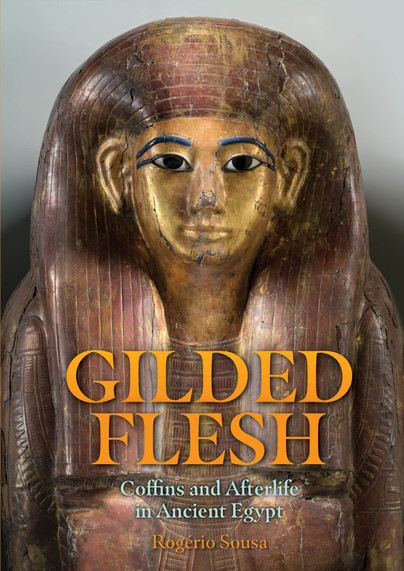
Format: Hardback
Pages: 208
ISBN: 9781789252620
Pub Date: 31 Oct 2019
Illustrations: b/w
Description:
Egyptian coffins stand out in museums’ collections for their lively and radiant appearance. As an involucre of the mummy, coffins played a key-role by protecting the body and at the same time, integrating the deceased in the afterlife. The paramount importance of these objects and their purpose is detected in the ways they changed through time.
For more than three thousand years, coffins and tombs had been designed to assure in the most efficient way possible a successful outcome for the difficult transition to the afterlife. This book examines twelve non-royal tombs found relatively intact, from the plains of Saqqara to the sacred hills of Thebes. These almost undisturbed burial sites managed to escape ancient looters and became adventurous events of the Egyptian archaeology. These discoveries are described from the Mariette’s exploration of the Mastaba of Ti in Saqqara to Schiaparelli’s discovery of the Tomb of Kha and Merit in Deir el-Medina. Each one of these sites unveil before our eyes a time capsule, where coffins and tombs were designed together as part of a social, political, and religious order. From the Pre-dynastic times to the decline of the New Kingdom, this book explores each site revealing the interconnection between mummification practices, coffin decoration, burial equipment, tomb decoration and ritual landscapes. Through this analysis, the author aims to point out how the design of coffins changed through time in order to empower the deceased with different visions of immortality. By doing so, the study of coffins reveal a silent revolution which managed to open to the common men and women horizons of divinity previously reserved to the royal sphere. Coffins thus show us how identity was forged to create an immortal and divine self.
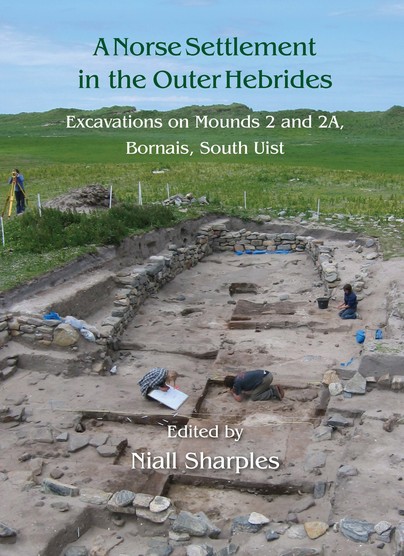
Format: Hardback
Pages: 728
ISBN: 9781789250466
Pub Date: 31 Oct 2019
Series: Bornais
Description:
The settlement at Bornais in the Western Isles of Scotland is one of the largest rural settlements known from the Norse period in Britain. It spans the period from the fifth to the fifteenth century AD when the Atlantic seaboard was subject to drastic changes. The islands were systematically ravaged by Viking raiders and then colonised by Norse settlers.
In the following centuries the islanders were central to the emergence of the Kingdom of Man and the Isles, played a crucial role in the development of the Lordship of the Isles and were finally assimilated into the Kingdom of Scotland. This volume explores the stratigraphic sequence uncovered by the excavation of Bornais mounds 2 and 2A. The excavation of mound 2 revealed a sequence of high status buildings that span the Norse occupation of the settlement. One of these houses, constructed at the end of the eleventh century AD, was a well preserved bow-walled longhouse and the careful excavation and detailed recording of the floor layers has revealed a wealth of finds that provides invaluable insight into the activities taking place in this building. The final house in this sequence is very different in form and use, and clearly indicates the increasing Scottish influence on the region at the beginning of the thirteenth century. The excavation of mound 2A provides an insight into the less prestigious areas of the settlement and contributes a significant amount of evidence on the settlement economy. The area was initially cultivated before it became a settlement local and throughout its life a focus on agricultural activities, such as grain drying and processing, appears to have been important. In the thirteenth century the mound was occupied by a craftsman who produced composite combs, gaming pieces and simple tools. The evidence presented in this volume makes a major contribution to the understanding of Norse Scotland and the colonisation of the North Atlantic in a period of dramatic transformations.


















